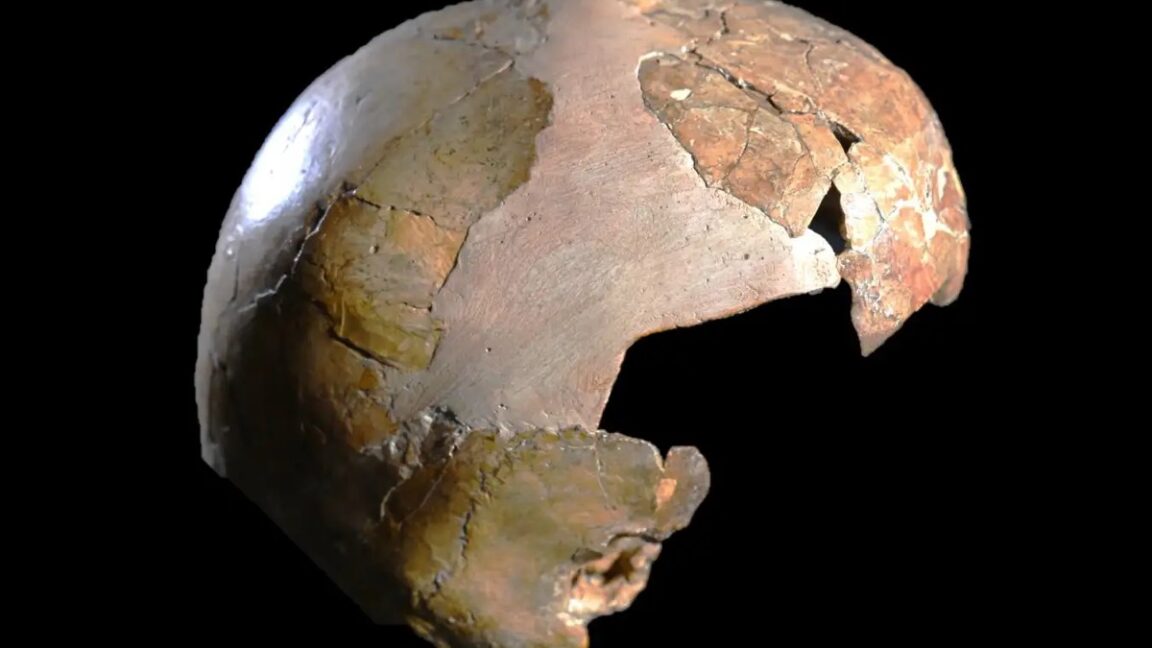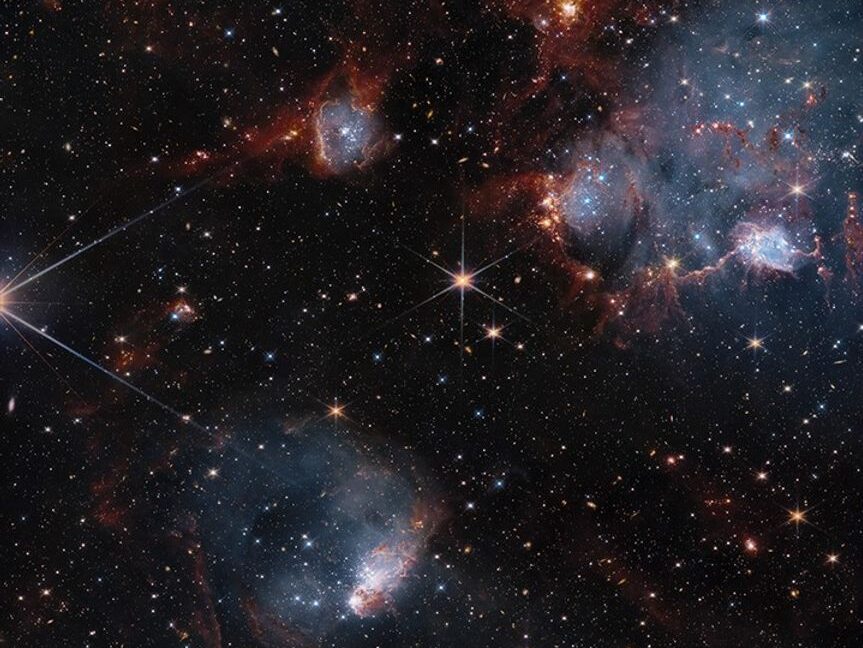The mandible had been separated from the skeleton, and both it and the neurocranium are incomplete, so they were reconstructed and consolidated with plaster. CT scanning made it possible to check that older reconstructive work to ensure it had not masked any elements that may have influenced the taxonomic classification, per the authors. The team also scanned the skulls of three Homo neanderthalensis skulls in the collection of the Musee de l’Homme in Paris and compared those skull characteristics with the Skuhl Cave skull and mandible.

Dan David Center of Human Evolution, Tel Aviv University
Images, based on CT scan, of Skhu ¯ l I neurocranium. blue denotes bone, green denotes filling.
Dan David Center of Human Evolution, Tel Aviv University

Dan David Center of Human Evolution, Tel Aviv University
The original mandible of Skhu ¯ l I and the CT scan-based images in anterior and left lateral view. In blue, the bone; in green, reconstruction.
Dan David Center of Human Evolution, Tel Aviv University
Images, based on CT scan, of Skhu ¯ l I neurocranium. blue denotes bone, green denotes filling.
Dan David Center of Human Evolution, Tel Aviv University
The original mandible of Skhu ¯ l I and the CT scan-based images in anterior and left lateral view. In blue, the bone; in green, reconstruction.
Dan David Center of Human Evolution, Tel Aviv University
They concluded that the neurocranium’s parietal and temporal bones, and the shape of the bony labyrinth, were consistent with Homo sapiens. However, other features, like the receded and high location of the posterior rim of the foramen magnum, indicated a possible Neanderthal lineage. And the mandible showed distinct Neanderthal characteristics, leading to the determination that the child was a hybrid of the two species.
Co-author Anne Dambricourt Malassé of the Institute of Human Paleontology in Paris admitted that she once thought such a hybridization would not have been viable; the results of their analysis demonstrate that it is possible, although the child in question died very young. These findings may also prompt a revisiting of the longstanding assumption that Skuhl Cave was a Homo sapiens gravesite.
“This study is maybe the first that has put the Skhul child’s remains on a scientific basis,” John Hawks of the University of Wisconsin-Madison, who wasn’t involved with the study, told New Scientist. “The old reconstruction and associated work, literally set in plaster, did not really enable anyone to compare this child with a broader array of recent children to understand its biology.” That said, he cautioned that without extracting and analyzing a DNA sample, one can’t make a definitive determination: “Human populations are variable and there can be a lot of variability in their appearance and physical form even without mixing with ancient groups like Neanderthals.”
L’Anthropologie, 2025. DOI: 10.1016/j.anthro.2025.103385 (About DOIs).















Leave a Reply